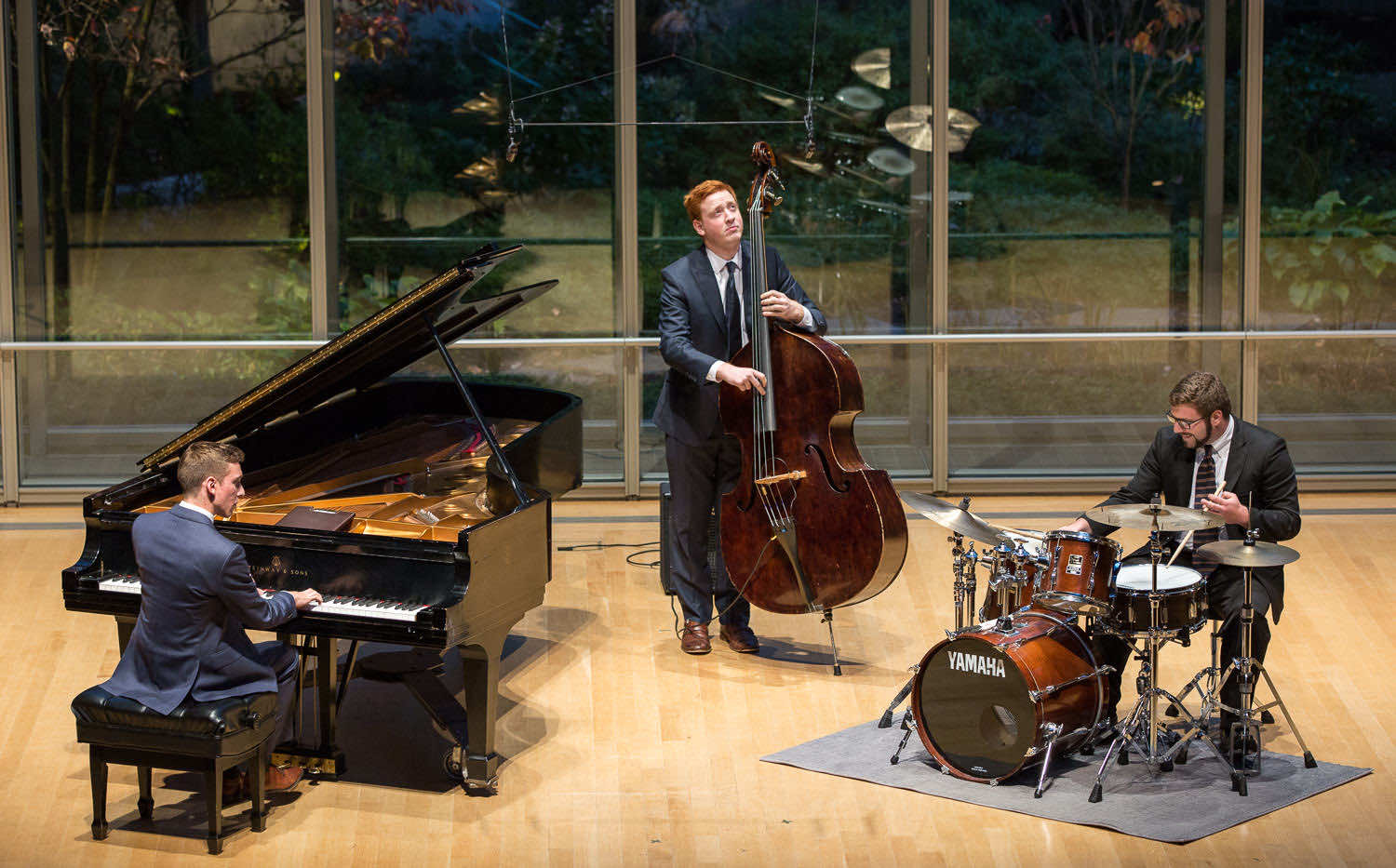Camera makers design their gear for the broadest possible audience. Out of the box, the settings are meant to serve vacationers, hobbyists, and anyone who just wants to point and shoot without digging into a menu. These defaults are tuned for safety, not precision, and they prioritize avoiding disaster over achieving excellence. That makes sense for casual use, but it’s a silent liability once you start working in professional environments.
A factory default is essentially a compromise. It’s the engineers saying, “This is what will work most of the time for most people.” But “most of the time” isn’t good enough when you’re photographing a wedding, shooting portraits for a paying client, or covering a live event where you can’t reshoot. Professionals can’t afford to let the camera guess at their intent, because the final file is their reputation.
When you leave your camera on default, you’re putting trust in someone else’s assumptions about what matters in an image. The camera doesn’t know if you care about the bride’s dress, the speaker’s face, or the detail in a white product box. It just follows the rules it shipped with, and those rules aren’t designed for nuance. That’s why stepping beyond default is part of becoming a professional in knowing how to set up your gear to support your intent, not sabotage it.
Here are five settings you should never leave on factory default if you care about speed, accuracy, and professionalism. Each one looks harmless until you’ve been burned by it. Once you’ve fixed them, you’ll wonder how you ever let the factory make these decisions for you.
1. Metering Mode
Most cameras ship in evaluative, matrix, or multi-segment metering. These modes split the frame into dozens of zones and calculate an exposure that balances everything. For tourists snapping daylight scenes, it works beautifully, as you’ll rarely get an image that’s wildly over- or underexposed. It’s designed for safety, not control. The assumption is that the subject is somewhere in the middle and the average is close enough.
The flaw is that photography isn’t about averages. Evaluative metering has no sense of priority; it treats a subject’s face and a patch of dark shadow as equally important. Photograph a dark-skinned subject in bright sunlight against a reflective building, and the camera may underexpose them to hold highlight detail in the background. Photograph a bride against a dark church interior, and the system dulls her dress to avoid losing shadow detail. The “balanced” exposure might technically protect tones, but it wrecks the story you meant to tell.

Consider a concert photographer. Evaluative metering will drag exposure down to reveal the dark stage, blowing out the performer’s face under the spotlight. Spot metering lets you meter directly on skin and preserve the subject as the star of the frame. Wedding shooters face the same battle: evaluative mode makes a white dress either gray and lifeless or pure white without texture. Spotting off the fabric ensures detail survives, even in brutal mid-day sun.
Tips for Pros
-
Learn your camera’s bias.
-
Use AE-L (auto exposure lock) with spot metering to hold consistent values across multiple compositions.
-
Pair spot metering with highlight warnings so you know exactly when you’re crossing the line into clipping.
Bottom line: Evaluative metering is designed for safe snapshots, not critical exposure. The moment you care about a specific subject, it’s time to ditch the average and take control.
2. Focus Area Mode
Default autofocus area is usually a wide zone, sometimes covering nearly the entire frame. The logic is simple: casual users want the camera to do the work. Point at the family dog, press the shutter, and the system locks onto something. It’s a design for convenience, not precision, and it gives the impression that the camera is “smart” enough to know your intent.
But wide-area AF is a gambler. It looks for the nearest object with the most contrast, which often isn’t your subject. Photograph a couple in a park and it locks on the tree behind them. Try shooting a performer and it grabs the microphone instead of the face. The problem isn’t that the system is broken; it’s that you gave it permission to guess. For a professional, guesswork is unacceptable.

Yes, modern subject-detection AF is remarkable. Eye-AF for humans and animals, vehicle tracking, even bird detection are all real and useful. But they’re not infallible. Glasses reflections, sideways profiles, or busy backgrounds confuse the system. If you rely on wide-area AF, you’re ceding control entirely. If you set the zone yourself, you’re still the director.
Tips for Pros
-
Use single-point AF for portraits, product work, or anything critical at shallow depth of field.
-
For fast action, combine subject detection with a reduced zone size to balance precision and speed.
-
Map your joystick or touchscreen for rapid AF point changes.
Bottom line: Wide-area AF is training wheels. The moment sharpness matters, stop letting the camera guess and put the focus point where you want it.
3. Highlight Warnings (“Blinkies”)
Manufacturers hide highlight warnings by default because they terrify beginners. Nothing looks more alarming than an image full of flashing white pixels. To a new user, it screams “broken.” But for professionals, those blinkies are one of the most useful exposure tools available.
Here’s why: the rear LCD lies constantly. It shows a JPEG preview of your raw file, influenced by picture styles, contrast boosts, and auto brightness. Under sunlight, it looks darker. Indoors, it looks brighter. The histogram helps, but it’s abstract: you’re interpreting a graph, not seeing where the problem is. Blinkies, by contrast, show exactly which areas of the frame are clipped beyond recovery.
Clipping is the silent killer of detail. In raw, you can usually recover highlights to a point, but once a channel is gone, it’s gone forever. That’s how lace in a wedding dress becomes a featureless white blob. That’s how a forehead under a spotlight becomes a patch of distraction. Blinkies let you catch this in the moment, not at your desk after it’s too late.
Professionals keep blinkies on as a guardrail. They let you expose aggressively to the right (brightening as far as possible for cleaner shadows) without tumbling over the cliff of lost highlights. They’re not there to annoy you; they’re there to keep you honest.
Tips for Pros
-
Remember blinkies are based on JPEG previews, so some recoverable data may flash. Learn how your camera translates raw latitude into warnings.
-
Don’t turn them off because they feel distracting; they’re supposed to distract you before it’s too late.
-
Pair blinkies with spot metering for a bulletproof exposure strategy: meter on the subject, then watch for flashing highlights.
Bottom line: Leaving blinkies off is like shooting without a seatbelt. You don’t need them until you do, and when you do, they save you from disaster.
4. Auto ISO Behavior
Auto ISO is one of the greatest features modern cameras have introduced. It frees you from constant adjustments by floating ISO while you set shutter and aperture. For fast-paced work, it’s brilliant. But the defaults are tuned for beginners, and they’re quietly sabotaging professionals.
By default, Auto ISO prioritizes keeping ISO as low as possible, even if that means dragging shutter speed into unusable territory. You’ll get clean ISO 200 files that are blurry because the camera let shutter drop to 1/30s. That might be fine for tourists shooting buildings, but for professionals shooting people or motion, it’s a recipe for failure.

Some bodies also offer “Auto Min Shutter” tied to focal length, following the old 1/focal length rule. At 200mm, the camera won’t go below 1/200s; at 35mm, it won’t go below 1/40s. This keeps handheld shots sharp automatically. It’s a feature buried in menus that most users never touch, but you should configure it once and save it to custom modes.
Tips for Pros
-
Err on the side of faster shutter: a noisy sharp photo beats a clean blurry one.
-
Save different Auto ISO setups to custom banks (sports, portraits, travel).
-
Don’t let “noise anxiety” push you into dangerous shutter speeds. Clients forgive grain; they don’t forgive motion blur.
Bottom line: The default prioritizes clean files over usable ones. Professionals know sharpness is king: ISO can be fixed, blur cannot.
5. File Format
Many cameras still ship set to JPEG-only. It keeps file sizes small, previews fast, and casual users happy. But for professionals, JPEG-only is often malpractice.
JPEG locks in decisions you can’t undo. White balance, contrast, sharpening, and more are all baked in permanently. Dynamic range is compressed, shadows are crushed, highlights clipped. Once it’s saved, there’s no rescue. Raw files, by contrast, keep everything: highlight headroom, shadow depth, and color flexibility. Even if you think you don’t need it, having raw is insurance.
The middle ground is raw+JPEG. You get the flexibility of raw and the speed of JPEG. Use the JPEGs for previews, same-day client teasers, or culling, but keep the raws for serious edits. Yes, it doubles your card usage. But cards are cheap, and lost latitude is expensive.
Consider shooting corporate portraits under fluorescent lights. JPEG-only means green skin locked forever. With raw, you globally shift white balance and fix the entire shoot in seconds. With JPEG, you’re retouching every frame manually. One decision costs hours.
Tips for Pros
-
Always shoot raw or raw+JPEG; never trust JPEG-only unless it’s an intentional choice for speed or efficiency.
-
Archive raws even if you don’t touch them immediately. You never know when a client will request a re-edit years later.
-
Don’t let storage space be the excuse. A $30 memory card costs less than losing a client’s trust.
Bottom line: JPEG-only is for tourists. Professionals keep their safety net, even if they deliver JPEGs in the end.
Conclusion: Stop Letting Defaults Decide
Every default setting is designed for safety, not professionalism. They’re built to keep casual users out of trouble, not to give you the best possible file. Evaluative metering averages away your subject. Wide-area AF gambles instead of obeying. Blinkies are hidden when you need them most. Auto ISO saves noise but sacrifices sharpness. JPEG-only locks you into decisions you can’t undo.
Professionalism means intent. You decide what matters in the frame, and you configure your camera to support that decision. Audit your defaults once, change what matters, and save those changes into custom modes. From then on, your gear works for you, not the mythical “average user” the factory was protecting.
In the end, defaults are training wheels. They’ll keep you upright, but they’ll also hold you back. The sooner you take them off, the sooner you start riding like a professional.








I often use auto-ISO in manual mode, works great in combination with spot metering in situations with fast changing light conditions, like concerts
Gonna have to disagree on the Auto ISO. I use it (at times) when shooting in manual and aperture priority modes and works great for me.
it didn't say not to use Auto-ISO, it just said to give it some parameters of configuration.
Just having the camera automatically selecting EVF or monitor when your eye is close to it is one of the most annoying features. That plus auto magnifier when focusing with manual lenses. I have to turn those both off immediately.
"....wide-area AF is a gambler. It looks for the nearest object with the most contrast." Never thought about that! Thanks.
Thanks Alex.
I'm not really a fan of auto ISO to be really honest but I use medium format cameras so the dynamic range is pretty incredible with those cameras so I'm not really worried if I have to push the ISO up but I generally don't use auto ISO very often but everyone is different when I was using crops sensor though definitely auto ISO was something I did use a fair bit especially in weddings as well